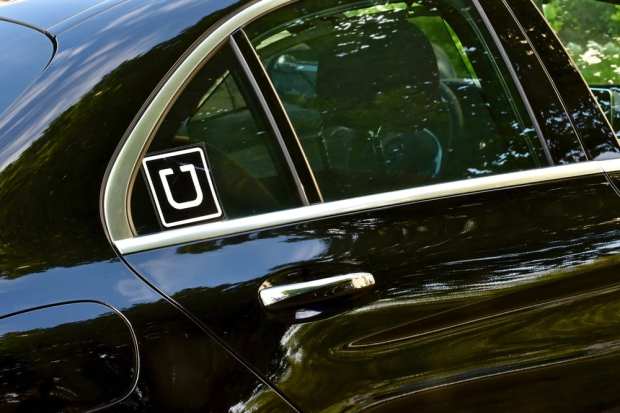Uber Presses The Gas On Autonomous Vehicles Via Volvo

Drivers of cars and trucks are not a diminishing breed – in fact, there is an ongoing U.S. shortage of drivers to haul freight long distances. But recent news from the world of autonomous vehicles could make one think otherwise.
According to a report this week (June 12) from Reuters, Uber, the ridesharing provider, “unveiled its newest Volvo self-driving car … as it works to eventually deploy vehicles without drivers under some limited conditions. Uber said the new production XC90 will be assembled by Volvo Cars in Sweden and have human controls like steering wheels and brake pedals, but also with factory-installed steering and braking systems designed for computer rather than human control.”
The vehicle reportedly employs artificial technology that enables it to “drive autonomously for long distances on highways without maps and ‘on the fly’ to plot its course and navigate construction zones.”
The Uber launch follows the launch earlier this week of Ford’s self-driving vehicle fleet, called the Ford Fusion Hybrid. Ford also has “opened a research center in Tel Aviv, joining a growing number of major automakers and suppliers setting up shop in Israel’s tech hub,” the report stated. Meanwhile, General Motors reportedly is seeking regulatory approval for its own driverless vehicles, which would serve the ridesharing industry.
The path to the autonomous vehicle future is gaining clarity, but given all the factors involved – not only regulation and technology, but also relationships among participants, to say nothing of the massive cultural change of drivers giving up power behind the wheel – there is still a ways to go. A recent PYMNTS interview shed light on how that future, in part, is coming together.
To that end, Sweden-based Mapillary has focused on crowdsourcing imagery for maps. In the last several weeks, it rolled out a platform to crowdsource imagery of various local settings, geographies and street-level data on demand. In terms of the mechanics, the collaborative efforts focus on what is known as street-level imagery, and mapping to satisfy the various needs of users, where getting a literal street-level view of what is of utmost importance.
In an interview with Karen Webster, Jan Erik Solem, co-founder and CEO at Mapillary, said that combined efforts on the company’s platform can serve the mapping needs across a range of logistics firms and cities, and can even make autonomous vehicles (and drones) a bit more, well, autonomous.
Another challenge going forward?
Guidelines for patents on self-driving car technology and internet-enabled vehicles have put tech firms and automakers at odds.
The obvious disparities between car makers like BMW and Daimler and tech firms like Qualcomm and Nokia show the future potential for legal problems and antitrust lawsuits regarding the guidelines. Qualcomm was ordered in May by a U.S. court to completely overhaul business practices because it suppressed competition in the mobile phone market by saying it would cut off supplies, and also by asking for excessive licensing fees.
The two industries’ guidelines differ in the way licensing fees get calculated, and in the rules for using patented tech. Both the European Committee for Standardization (CEN) and the European Committee for Electrotechnical Standardization (CENELEC) have supported the guidelines.
Even so, the drive toward the autonomous vehicle future keeps attracting major players in the digital economy. Earlier in June, for instance, news emerged that Apple is interested in acquiring Drive.ai, which was launched to develop self-driving taxis, in an effort to push further into the self-driving vehicle market.
CNBC, citing The Information, reported that if Apple was to acquire Drive.ai, it would gain dozens of engineers. The company has raised $77 million to date and had a valuation of $200 million in 2017, noted the report.
This isn’t the only move Apple is making in the self-driving car market that is sparking speculation. In April, Reuters reported that Apple held discussions with suppliers of lidar, a sensor that gives drivers a 3D view of the road. Apple wants the sensor to be smaller, less expensive and easier to mass-produce than what is currently available. One person told the outlet that Apple is calling for a “revolutionary design.”
As the Uber and other moves show, companies are pressing the gas and racing to gain an edge with self-driving car technology.
